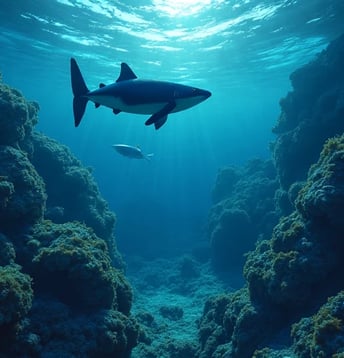PAUL JRAY
My name is Paul J. Ray, and I am a marine biotechnologist and policy advocate specializing in the intersection of deep-sea biodiversity, intellectual property rights, and global equity. Over the past decade, my work has focused on resolving one of the most pressing ethical dilemmas of our time: ensuring fair and sustainable benefit-sharing from deep-sea genetic resources. Today, I will outline the challenges, opportunities, and frameworks necessary to prevent the monopolization of these resources while fostering global collaboration.
1. Background and Motivation
The deep ocean, Earth’s largest and least explored ecosystem, harbors genetic treasures with transformative potential—from cancer therapies to climate-resistant crops. However, the rush to patent deep-sea genes has exposed critical inequities:
Geopolitical Asymmetry: Only a handful of technologically advanced nations and corporations can access and exploit deep-sea resources, leaving developing states and Indigenous coastal communities marginalized.
Legal Fragmentation: Existing frameworks like the UN Convention on the Law of the Sea (UNCLOS) and the Nagoya Protocol lack enforceability in international waters, creating a "Wild West" of bioprospecting.
Ethical Vacuum: Profit-driven patenting risks ecological harm and disregards the principle that marine genetic resources are the "common heritage of humankind."
My motivation stems from a decade of fieldwork in the Pacific abyssal plains, where I witnessed both the scientific promise of deep-sea organisms and the stark disparities in how their benefits are distributed.
2. Key Challenges in Deep-Sea Genetic Patenting
To address these issues, we must confront four systemic barriers:
A. Inequitable Access to Technology
High costs of deep-sea exploration tools (e.g., submersibles, gene-sequencing platforms) exclude most Global South nations from participating in research or commercialization.
B. Ambiguous Legal FrameworksThe International Seabed Authority (ISA) currently regulates mineral resources but lacks a mandate for genetic material, leading to jurisdictional gaps.
C. Profit vs. Conservation ConflictsPatent holders often prioritize short-term gains over long-term ecological stewardship, undermining sustainable use.


Deep-Sea Research
Innovative solutions for analyzing genetic patents and benefit-sharing agreements in deep-sea research.
Data Integration
Automate extraction and categorization of global deep-sea genetic patent texts and legal cases efficiently.


Model Fine-Tuning
Develop advanced tools to analyze patent clauses for equitable benefit distribution patterns in research.
Simulate Policy Proposals
Generate and assess feasibility of benefit-sharing proposals through multi-stakeholder interaction simulations.




Deep-Sea Research
Automating data integration and analyzing benefit-sharing patterns effectively.


Data Integration
Collecting and categorizing global deep-sea genetic patents efficiently.






Model Fine-Tuning
Developing tools to analyze patent clauses for patterns.
"NLP-Based Semantic Segmentation of Patent Claims" (2023): Explores AI techniques for parsing complex patent clauses, relevant to data processing.
"Generative AI in Bioethics Policy Simulation" (2024): Analyzes GPT-3.5’s limitations in simulating vaccine distribution fairness, supporting the choice of GPT-4.

